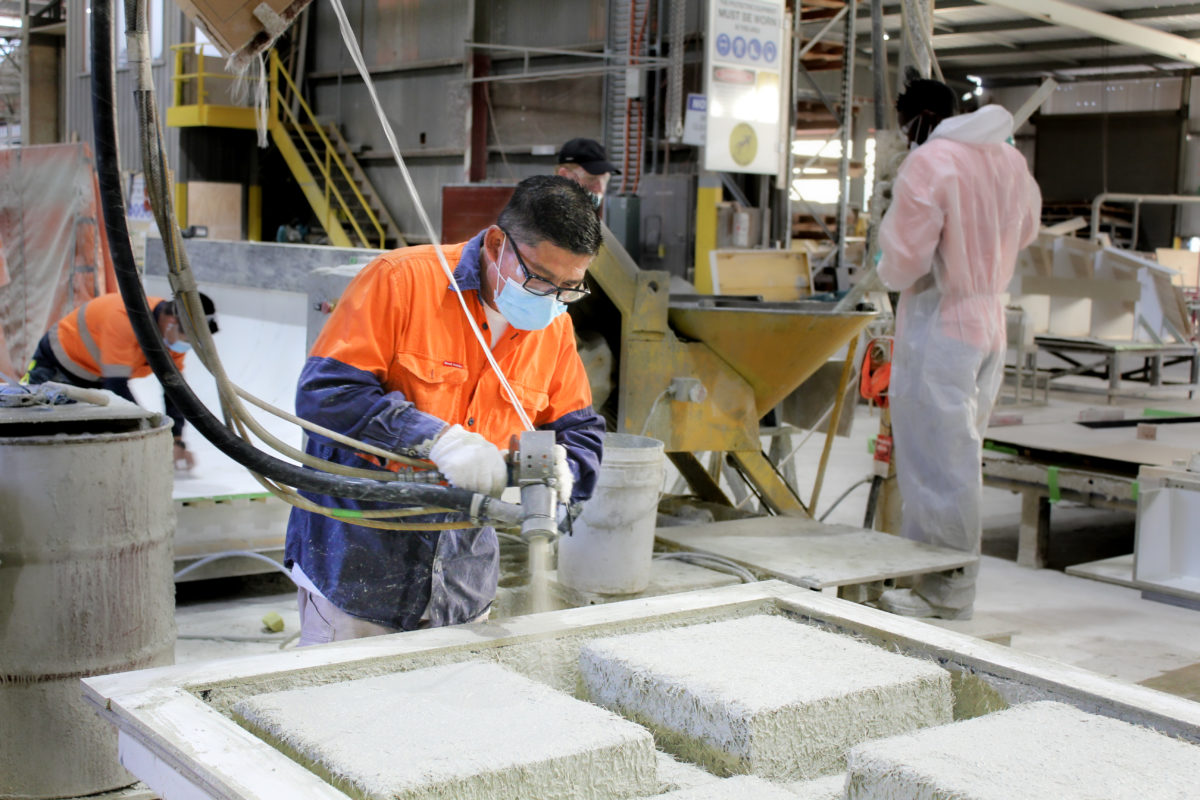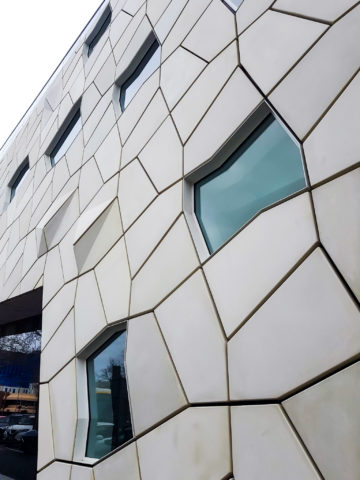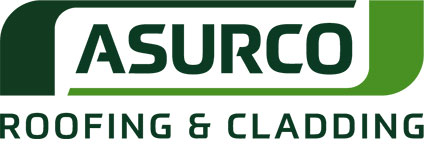What is Glass Fibre Reinforced Concrete?
Glass-fibre reinforced concrete, or GRC, is an innovative and lightweight concrete. With the opportunity to cast virtually unlimited shapes, profiles and textures – GRC can bring your project to life without limitations.
It uses alkali-resistant glass fibres as reinforcement instead of the steel used in conventional precast. Uniquely agile, versatile and sustainable, this material is quickly becoming a choice solution for architects, designers and builders
globally.
How is glass-fibre reinforced concrete manufactured?
GRC comprises a concrete matrix combined with alkali-resistant glass fibres. This blend of glass fibres and concrete is what gives this unique compound its lead-bearing strength and flexibility.

There are two methods for casting commercial GRC: spray up and premix.
Spray up
Using a specialised spray gun, the fluid concrete mixture is sprayed into a mould. The spray gun has an integrated fibre chopper to continuously feed glass fibres into the concrete slurry. This method allows for a high fibre load to produce the strongest possible result and is typically used in large scale projects.
Premix
The chopped glass fibres are incorporated into a concrete slurry during the mixing and preparation process. This slurry is then poured into moulds or sprayed. This method results in slightly less strength due to the randomness of the fibres, however, it is more cost effective than the latter.
The finishes of GRC are equally diverse as it can be stained, coloured, left natural or smoothed over for a flawless finish. Often glass-fibre reinforced concrete is used for architectural panels and cladding; cast in multiple, thin layers the surface finish can be sand-blasted, acid etched or polished with various coloured cements and pigments available.

Uses and applications of Glass-fibre reinforced concrete
Because of its strength and composition, glass-fibre reinforced concrete presents designers and builders with a material with which to create the most ambitious designs. With the ability to be cast and finished in virtually unlimited styles and shapes, GRC can be used to replicate traditional, historic features or modern, futuristic designs.
Adapted to suit any project, GRC has a range of uses and applications. Commercially, it is often used in exterior building façade panels as an architectural concrete. It is moulded into thin, lightweight panels with the opportunity
for more creative freedom than conventional concrete.
Glass-fibre reinforced concrete is incredibly versatile thanks to its strength, weight and design. It’s a cutting- edge building solution and has been used for commercial offices, retail shopping centres, cultural buildings and churches, complex roofing and façade elements, noise walls, education facilities, government buildings and more.

Advantages and benefits of GRC
Glass-fibre reinforced concrete is a truly unique and versatile material that offers a number of benefits over its conventional counterparts. It is strong and lightweight, making it faster and more affordable to install while still offering durability and strength to the point of being almost indestructible.
Some of the key advantages include :
Strong
The unique chemical composition and high dose of glass fibres makes for a high impact material with an impressive strength-to-weight ratio. GRC has a tensile strength that is three to four times greater than steel-reinforced concrete. GRC has an undeniable strength and while its relative density is similar to concrete, GRC panels can be made much thinner. Glass-reinforced concrete can be up to 80% lighter than traditional concrete, meaning greater ease in handling and installation. Not only is it a tough and easy to handle material, but it is more cost-effective thanks to its lighter weight.
Versatile
The combination of strength and flexibility provides virtually unlimited opportunity when creating a lighter, thinner and architecturally complex structure. Without the need of steel or other rigid components, GRC offers creative possibilities for designs of any size, with intricate details, complexing shapes or smooth curves. There are also a range of finishes available, with a variety of textures, colours and surface details.
Sustainable and energy efficient
The production of glass-fibre reinforced concrete requires a lower consumption of energy and natural raw materials, it’s often produced using recyclable materials. The composite is based on natural earth oxides that are considered to be safe for the environment. It is a sustainable solution that also has a much lower environmental impact than traditional concrete precasts.
Durable and non-combustible
Unlike conventional concrete, GRC is not at risk of corrosion and is specially formulated for greater protection and wear. The material requires minimal maintenance and can be formulated to offer additional resistance to weather, sound, fire, chemicals and impact.

Why choose glass-fibre reinforced concrete?
Today, glass-fibre reinforced concrete is making a significant contribution to the technology and aesthetics of the construction industry worldwide. Its unique properties bring projects to life when conventional materials cannot. GRC is a sound choice for projects where performance, flexibility and appearance are equally important.
Our team of industry experts at Asurco can help you discover how you can utilise GRC for your next project.


